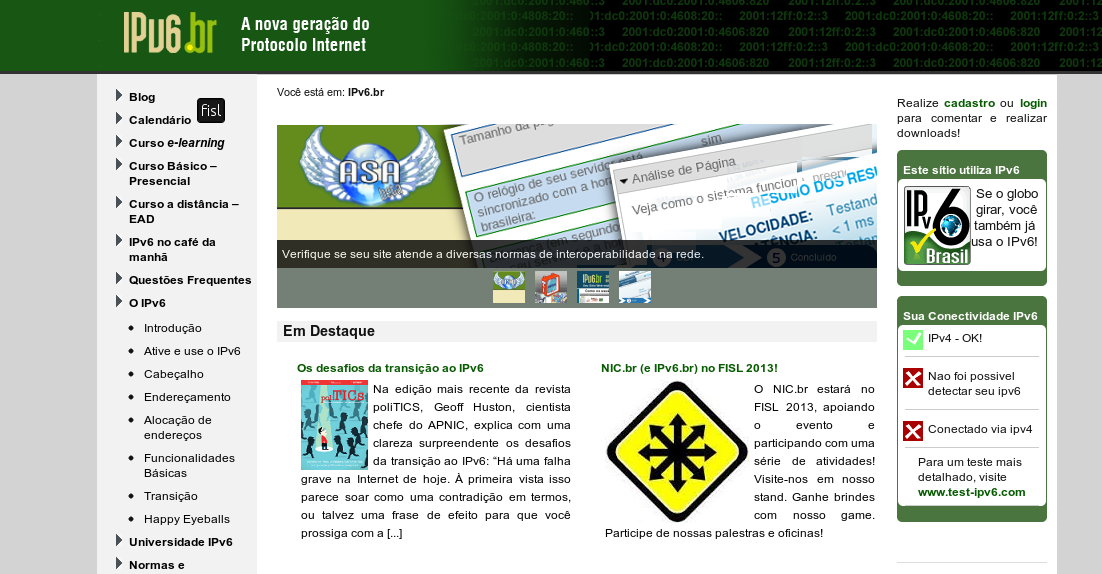
Those attending Fisl14 can open the website using IPv6: hgttp://ipv6.br. IPv6 is the current version of the Internet Protocol.
If you don't know, IPv6 is the most up-to-date of the Internet Protocol. It was originally published in June, 6, 2012 and is an effort from the IETF to create the "new IP generation" (IPng: Internet Protocol next generation), whose guidelines were written by Scott Bradner and Allison Marken, in 1994 at the RFC 1752.1. Its main spec is found at the RFC 2460.2.
The protocol is being deployed gradatively in the Internet and shall work sid by side with IPv4, in a kind of "dual stack" for some time. In the long run, IPv6 will replace IPv4, which can only support 4 billions (4 x 109) IP addresses, whereas IPv6 will support 3,4 x 1038 IP addresses.
The issue is so relevant that some governments have supported the deployment. The United States government, for example, in 2005, ruled that all its federal agencies must certify that they can run in IPv6 up to July, 2008. In that date, a new revision of the recommendations was released for adoption of IPv6 in federal agencies, with July, 2010 as a deadline. The brazilian government recommends the adoption of the protocol in the e-PING document, from the Interoperability Standards of Electronic Government.



















